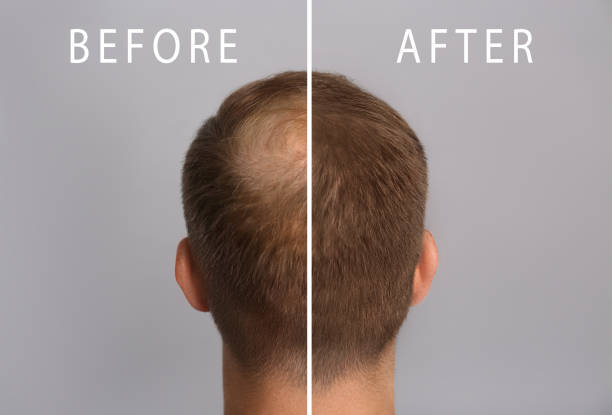
Crown Hair Transplant in Jaipur

“Hair is the silent ambassador of youth, confidence, and vitality.”
Hair loss can be deeply personal, yet widely common. Globally, over 50% of men and nearly 25% of women experience hair loss by the age of 50. Studies show that nearly 40% of hair loss cases in men begin in the crown region. Crown hair loss is a gradual, often unnoticed process until significant balding appears. Despite its frequency, crown baldness often remains untreated for long, delaying intervention.
According to the expert team IFT Hair Science in Jaipur:

“Crown area hair loss tends to progress silently and may not be noticeable at first glance. But it can significantly affect a person’s self-image and confidence. With today’s advancements in technology and technique, we’re seeing incredible outcomes in crown hair transplant results—even in areas that were once considered difficult to restore. Each patient deserves a tailored plan, and success lies in the precision of diagnosis and care.”
What is a Crown Hair Transplant?
The IFT Hair Science Team explains:
“The crown area is the most challenging region for regrowth due to its unique blood supply and hair growth patterns. A crown transplant is a specialized type of hair transplant procedure focusing on restoring lost hair in this region. It’s a targeted and technical hair restoration method that carefully re-implants hair grafts following the natural whorl pattern of the crown. This ensures the results look natural and grow consistently.”
Who is the Right Candidate for a Crown Hair Transplant?
Stable Hair Loss: Candidates must have stabilized hair loss, as ongoing shedding may affect long-term results.
Healthy Donor Area: There should be enough healthy hair at the back and sides of the scalp to extract grafts.
Realistic Expectations: Understanding the time required to see results and the limitations of graft density is crucial.
Age and Health: Typically, individuals above 25 with no underlying medical conditions make better candidates.
Non-responsive to Medication: Those who haven’t responded to medications like minoxidil or finasteride may consider surgical restoration.
Benefits of Having Crown Hair Transplant

Natural Appearance: By following the whorl pattern, transplanted hair blends seamlessly with existing strands.
Permanent Results: Transplanted grafts from the donor area are resistant to hair loss, offering long-lasting outcomes.
Low Maintenance: Once the hair grows, it behaves like natural hair—no special shampoos or maintenance is required.
Improved Confidence: The psychological uplift after seeing fuller hair is profound.
Customizable: The procedure is tailored to your specific crown pattern, making it more precise and effective.

Wondering what to expect during the treatment? Let’s walk through the entire procedure step by step.
Crown Transplant Procedure Overview

Consultation – A thorough scalp analysis, health check, and discussion of expectations.
Hairline & Crown Mapping – Designing the crown area to match the natural whorl pattern.
Donor Area Preparation – The back or sides of the head are prepared for graft extraction.
Graft Harvesting – Using techniques like FUE and IFT, healthy hair follicles are extracted.
Recipient Area Creation – Tiny incisions are made following the swirl pattern of the crown.
Graft Implantation – Follicles are implanted into the prepared site with precision.

Post-Procedure Care – Patients receive detailed aftercare instructions to support healing and growth.
Curious about the crown transplant procedure and how it can help you? Connect with a qualified hair restoration expert for a personalized consultation.
Visual proof speaks louder than words—let’s take a look at real-world transformations.
Hair Transplant Crown Before and After Pictures
Cost of Crown Hair Transplant
Number of Grafts Required – A 1000 grafts hair transplant can be less expensive than procedures needing 2500+ grafts.
Technique Used – FUE, IFT, or other advanced methods may influence pricing.
Clinic Reputation – Well-established clinics with experienced surgeons may charge a premium.
Geographical Location – Metro cities often have higher pricing than smaller towns.
Why Choose IFT for Crown Hair Transplant?
Experienced Medical Team: Driven by an expert team of seasoned dermatologists, cosmetologists, and hair transplant surgeons with over 17 years of collective experience
Patient-Centric Care: From consultation to aftercare, every step is customized to meet the patient’s goals.
Cutting-Edge Technology: Incorporates the latest tools and techniques for precision, minimal downtime, and natural outcomes.
Consistent Results: The clinic showcases some of the best crown hair transplant results in the industry.
Ethical Practices: Transparent communication, realistic expectations, and no overpromising.
Have more questions in mind? Let’s clear up some common queries about crown transplants.
Frequently Asked Questions
Is a crown hair transplant permanent?
Yes, the results are typically permanent. Transplanted hair is taken from areas genetically resistant to hair loss, so once established; it continues to grow naturally for a lifetime.
How many grafts are needed for a crown hair transplant?
This varies based on the extent of baldness. For moderate crown thinning, around 1000–1500 grafts may suffice. Extensive baldness may require up to 2500 grafts or more.
How long does it take to see results in the crown area?
Can I get a crown transplant if I still have hair loss in other areas?
Are there any risks associated with crown hair transplants?
Disclaimer: The information shared in this content is for educational purposes only and not for promotional use.


